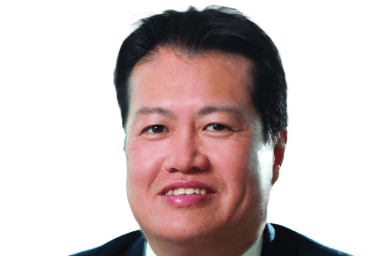Retirement
I want to transfer my business premises into my SMSF. Are there any traps?
Retirement
I want to transfer my business premises into my SMSF. Are there any traps?
I want to transfer my business premises into my SMSF. Are there any traps?
Transferring a business premises to an SMSF definitely has its advantages but there are also traps that you need to be aware of.
Transferring the business premises, referred to as “real business property”, into a SMSF is a good way of extracting funds out of the business, in a tax effective way. It means the business owner is paying rent to the super fund, rather than to some third-party landlord. It is one of the few ways to utilise superannuation investments in the business.
But in the rush to transfer the business property to the SMSF, investment fundamentals should not be forgotten. A key consideration is that holding the property in the SMSF has to make sense from an investment, tax and income perspective, and not simply because property is viewed as the hot asset class of the moment. So what are some of the traps you need to be aware of:
- Make sure the property being transferred is transferrable to your SMSF
Only property that is solely used for business can be transferred to your SMSF. This means it cannot be part commercial and part residential. For example a shop with a residence on the second floor cannot be transferred unless the shop and residence are on separate titles and only then, the shop can be transferred to the SMSF.

According to the Australian Taxation Office, vacant land cannot be transferred to an SMSF.
Also business real property cannot include company title or shares in a company that solely owns the business property. It also does not include the business property’s furniture or non-fixtures.
- Diversification risk
If the business premise is the only asset of the superannuation fund, questions should be asked as to whether it is the best option. There are a number of problems in having a large portion of superannuation savings tied up in one asset. Having one dominant asset class brings increased risk to any superannuation portfolio. And having only one asset in that asset class exacerbates it further.
- Liquidity risk
Additionally, property is usually illiquid, which may cause issues for the SMSF, particularly if any of the fund members are in pension phase and also need regular income from the fund. That is the business property may not generate enough income to pay the minimum pension percentage.
These liquidity issues can be long-ranging and difficult to foresee, and can be triggered by the death of a fund member. For example, if two business partners are in a SMSF that was set up for the express purpose of owning the business property and one of them dies, the business property may have to be sold to pay out death benefits.
- Having your retirement savings too closely linked to your business
There is also the risk of having one’s retirement benefits linked to one’s business. It may be that the business premises may not be the best type of investment to hold in the fund, as commercial properties can have lower rates of growth than residential properties or other asset classes. Also, if the business falls behind in rental payments and the fund takes no action to recover the shortfall, then the fund’s compliance status is at risk because the fund is effectively providing financial assistance to a related party, which is a breach of the SMSF investment rules.
There is no question that property investment can reward SMSF investors with capital growth and steady rental income. The decision whether to transfer the business property into the SMSF is a matter of determining not only the investment merits of the business real property in question, but also the current and future needs of the members of the SMSF.
Andrew Yee, director, superannuation, HLB Mann Judd Sydney.

Self managed super fund
Financial progress hinges on ambition, not income, says Stake Report
Australia faces a financial turning point, with new research from online investment platform Stake revealing a nation divided into two distinct groups: the 'Starters', who invest and feel in control ...Read more

Self managed super fund
OKX targets Australia's $1 trillion SMSF market with new crypto platform launch
In a significant move aimed at capitalising on Australia's burgeoning digital asset market, global onchain technology company OKX has unveiled a new Self-Managed Super Fund (SMSF) expansion on its ...Read more

Self managed super fund
Industry leaders launch SMSF Innovation Council to drive digital transformation
A consortium of finance industry leaders has launched an SMSF Innovation Council to help Australia's $1.02 trillion self-managed superannuation fund industry navigate digital transformation. Read more

Self managed super fund
Superannuation guarantee to be paid on government paid parental leave, says ASFA
The Association of Superannuation Funds of Australia (ASFA) has hailed the government's decision to include Superannuation Guarantee payments with its Paid Parental Leave policy as a critical step ...Read more

Self managed super fund
SMSF experts advise against hasty reactions to potential super tax changes
As the Australian Government proposes a new tax measure on superannuation earnings for balances exceeding $3 million, experts from the self-managed super funds (SMSF) sector are urging members not to ...Read more

Self managed super fund
Federal government announces changes to superannuation contribution caps
The Federal Government has announced changes to the superannuation contribution caps, impacting self-managed super funds (SMSFs) and their members from 1 July 2024. Read more

Self managed super fund
SMSF Association calls for joint effort to tackle early super access
The SMSF Association is calling on a collaborative approach including the Government, the Australian Taxation Office (ATO), the Australian Securities and Investments Commission (ASIC), and the ...Read more

Self managed super fund
Rest Super members file class action over alleged insurance premium deductions
Shine Lawyers has initiated a class action lawsuit against Rest Superannuation (Rest), alleging the unlawful deduction of income protection insurance premiums from members' superannuation accounts. Read more

Self managed super fund
Financial progress hinges on ambition, not income, says Stake Report
Australia faces a financial turning point, with new research from online investment platform Stake revealing a nation divided into two distinct groups: the 'Starters', who invest and feel in control ...Read more

Self managed super fund
OKX targets Australia's $1 trillion SMSF market with new crypto platform launch
In a significant move aimed at capitalising on Australia's burgeoning digital asset market, global onchain technology company OKX has unveiled a new Self-Managed Super Fund (SMSF) expansion on its ...Read more

Self managed super fund
Industry leaders launch SMSF Innovation Council to drive digital transformation
A consortium of finance industry leaders has launched an SMSF Innovation Council to help Australia's $1.02 trillion self-managed superannuation fund industry navigate digital transformation. Read more

Self managed super fund
Superannuation guarantee to be paid on government paid parental leave, says ASFA
The Association of Superannuation Funds of Australia (ASFA) has hailed the government's decision to include Superannuation Guarantee payments with its Paid Parental Leave policy as a critical step ...Read more

Self managed super fund
SMSF experts advise against hasty reactions to potential super tax changes
As the Australian Government proposes a new tax measure on superannuation earnings for balances exceeding $3 million, experts from the self-managed super funds (SMSF) sector are urging members not to ...Read more

Self managed super fund
Federal government announces changes to superannuation contribution caps
The Federal Government has announced changes to the superannuation contribution caps, impacting self-managed super funds (SMSFs) and their members from 1 July 2024. Read more

Self managed super fund
SMSF Association calls for joint effort to tackle early super access
The SMSF Association is calling on a collaborative approach including the Government, the Australian Taxation Office (ATO), the Australian Securities and Investments Commission (ASIC), and the ...Read more

Self managed super fund
Rest Super members file class action over alleged insurance premium deductions
Shine Lawyers has initiated a class action lawsuit against Rest Superannuation (Rest), alleging the unlawful deduction of income protection insurance premiums from members' superannuation accounts. Read more









